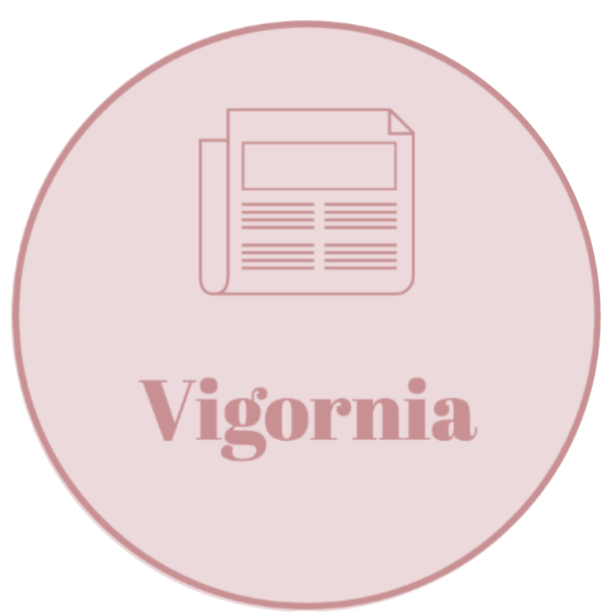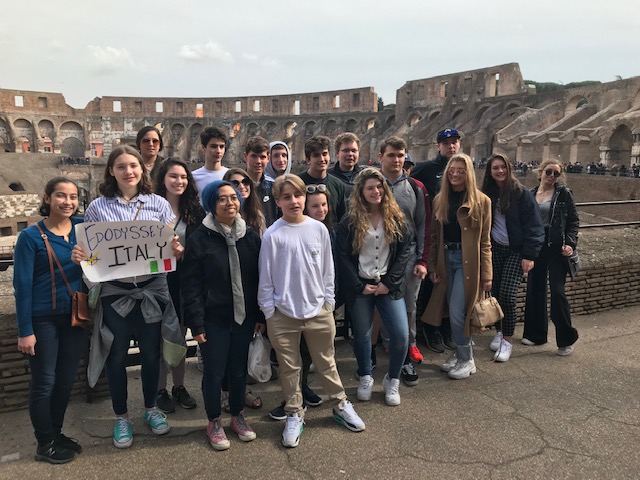WA Latinists’ Journey to Rome
Upper School Latinists traveled to Rome, Italy from March 8 – 14, as part of an academic and service learning program, Walking With Palladio: A Passport to Rome.
The students were accompanied by Worcester Academy’s three Latin teachers: Ms. Birnbaum, Ms. Geenty, chaperones, and Dr. Markey, program founder and leader. They toured on foot the timeless city, following in the main the valuable Rome guidebooks of the great architect Andrea Palladio. The group stayed at a guesthouse and embarked on unforgettable excursions featuring sightseeing, museum touring, local cuisine dining, and the overall immersion into the unchanging artistic, architectural, and linguistic culture of Rome.
Sophomore Latinist Michael Tonelli elaborated on the itinerary of the trip, highlighting the amazing pasta, pizza, and meats, the surreal experience of the historical art at the Vatican Museum, and a little exposition to daily life in Italy, including going to a local school and seeing how the educational systems abroad differed to those in America. Tonelli also talked about the general environment of the city, describing the contrasts between the more busy and bustling parts of Rome, with the more cozy and sparse areas: “There’s so many tourists there, so its so populated, but at the same time, you find areas [with] native people there, and there [are] so many people, so many tourists, so much walking around, so much talking, and it’s just a very loud city,” Tonelli said.
Despite the group’s unique and exotic experiences with the local attractions, food, people, and more, one of the central themes of the trip was the connection of Roman history and art, and how they complemented each other to illustrate the ancient chronicles of Rome, the Renaissance, the Enlightenment, and more. With Rome arguably being one of the most prestigious and prominent sources of the birth and founding of European culture, this inseparable mingling between history and artisanship creates a profound story of the past that this group explored.
Ms. Geenty, chaperone and Latin teacher, emphasized this connection between art and the story of Rome: “You get to see the connections between art and how art basically encapsulates everything,” Ms. Geenty said. “The art tells stories. You get to see Raphael’s school of Athens and you get to see the connection between the biblical stories of the Sistine Chapel and Michelangelo’s work . . . You get to see how the architecture defined the city wall, defined the roads, Roman innovations there, and so you see the architecture as a vision of art as part of their daily life,” she said.
However, over all else, the fun of the trip was made through finding time to bond with one another, in environments that allowed for more social interactions than that of a classroom – at least for Ms. Geenty: “That was my favorite time of the whole trip – when we would sit down over a meal and just hang out. ‘Cause I got to know the kids, I got to know the teachers, and got to drink some incredible coffee,” she added.
Dr. Markey explained his gratitude to the preservation of the Latin Classics, and the revival of ancient literary culture from the Renaissance: “The culture was largely preserved because of these, honestly, monks preserving texts of works of philosophy, poetry, you name it. If they hadn’t had that habit, if all they did was translate a work, and then get rid of the original – that’s not what these guys did. They translated it sometimes but preserved the original by copying it and keeping it in libraries. And so the culture that we have to study called Latin for short in a high school, in fact is a result of a very long process of careful transmission,” he said.
Dr. Markey believed that this concept of Roman cultural preservation was a central motif of the program that the students learned, in terms of understanding how much effort it took for medieval and Renaissance scholars to pass on the stories and the arts of Latin culture that is commonly known today. “[The students] solidified what they knew by seeing it in person. I think they understood that it required effort for this tradition of architecture to continue. Enormous effort, even after the fall of Rome,” Dr. Markey said.
The appreciation of Roman culture within not only the confines of this specific program, but to anyone visiting the city, as Dr. Markey says, is something that is attributed to the universal theme of the conservation of culture: “Despite how time destroys, war, natural disasters, what have you, the entire fall of a civilization and yet not its culture. So the city fell to pieces, and the people who identified as Roman per se were no longer, but even so, Roman culture persists and is preserved in literature,” he said.
The World Languages department makes a great effort to push the limits of learning beyond what campus has to offer. Steps have been taken, by all languages, to organize abroad programs like this in order to expand the horizon of the students’ education and overall awareness of the rest of the world. “It’s about the students and their experience and their education. I think we managed, and we will try again, to create a classroom without walls. A classroom that moves from street to street, building to building, monument to monument, square to square, et cetera,” Dr. Markey said.
The Rome program, tightly integrated with all classes in US Latin, was an overall success in that students used the opportunity to immerse themselves in foreign culture, ancient and modern, while the ambitious agenda was organized perfectly – so much so that, as Dr. Markey states, the group had no intentions to leave the beautiful city: “It was a well-timed trip at 6 days. Everybody was ready to come home, but everybody was ready to go back.”

